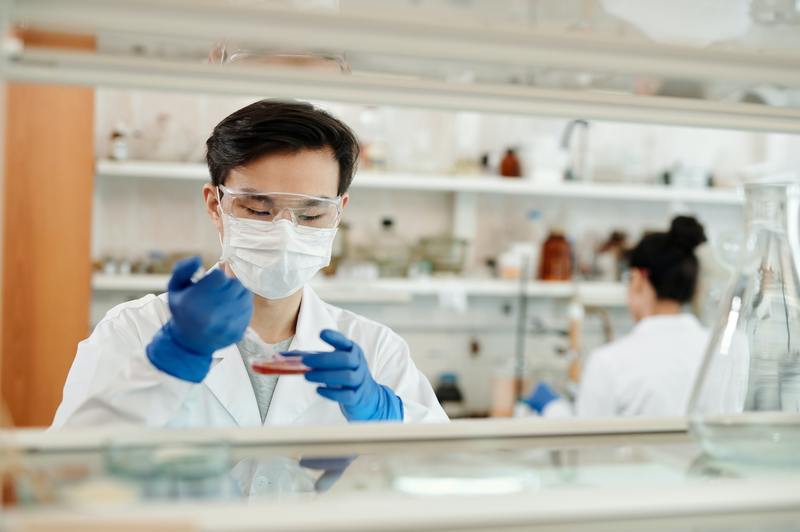There are many different ways to do pest extermination so have you ever wondered what is microbial control? After all, there are so many choices against all sorts of pests around, it can be hard to differentiate one from the other.
Have you ever had that experience when you’re casually walking around the house, then suddenly a cockroach or mice crosses your path? Do you still remember how you responded and what you did to remove them from your place?

Most people would grab something to mash the uninvited guest immediately, then forget about the event altogether. However, if you think about it, it’s best to start considering extermination services from pest control at that same moment.
Microbial Control For Pests
Pests have been getting tougher to survive against all our efforts to keep them out of our living space. For such reasons, pest control continues to find new ways to deal with them, as well as continuously update their current methods to better fight infestations.
If you’re looking for alternatives, check this article discussing how do you control pests aside from pest control.
Despite many different methods for pest extermination, most of them have common characteristics, target the pest, and killing mechanism. These similarities can be used to categorize extermination methods and one of which is microbial control.
Microbial control falls under the category of biological pest control measures, which makes use of live organisms to fight off and prevent infestations. In the case of microbial pest control, the controlling organisms used are barely, if not totally, seen with the naked eye.
Remember that the commonly recognized categories of pest control methods are as follows:
- Chemical pesticides
- Biological pest control
- Mechanical pest control
- Natural and organic pest control methods
For microbial control, live microorganisms are introduced into either an already infested area or an area that the owner would want to get protected. The type of microorganism that is chosen for this job is evaluated using the following factors:
Pest and microorganism compatibility
The first item to consider when deciding on microbial control is how well a certain organism can work against the pest of concern. Since the aim of applying pest control methods is to ultimately remove and prevent pests in a certain area, the microorganism must have a high capacity to do that job.
Microorganisms have innate living preferences that can get in the way, and sometimes kill another organism, and such capability is what’s harnessed during pest control. Sometimes this capability is applied as it is, but other times, it can get enhanced and made more efficient.
Host and microorganism compatibility
The next item that needs to get checked before releasing foreign microbes into a particular field is their capability to live with the hosts(like animals and plants) in the area.
Microbial pest control is typically used in farmland and on crops, so you must be certain of the reactions from both sides of this relationship. As mentioned, even microorganisms have requirements on their living situation so introducing them to a new environment can spark unexpected phenomena.
Make sure that you thoroughly examine, preferably tested, how a specific microbe is going to do once placed in an approximation of your actual area. By doing and confirming with this test, you can ensure that neither the host nor microbe dies or gets disfigured with disease from the new set-up.
Specificity
More to do with the biological makeup of your chosen microbe species, the next factor you’ll need to check is specificity. Since microbes can be effective only with certain characteristics of a particular pest, you need to make sure that you’re getting the right one.
Specificity will assure effectiveness, and is somehow a sub-factor to compatibility but is tied to both host and pest, as well as the specific environment you have in the area.
Reproduction
As we’re now talking about living organisms, you need to remember that they are not limited to just eating, living, and breathing. Microbes are also programmed to reproduce at a constant rate under a certain environment.
When you introduce them to a certain location, do note that their number will grow with time and that can lead to significant accumulation. When microbes increase in population, they’ll need more input of food and if your pest control is effective, that supply can fall short of the demand.
While some microbes can just die when there are no nutrients to live by available, it can become problematic if they do not. They might find anything edible around the area that’s not supposed for that purpose and can cause havoc along the way.
Toxicity to the surrounding ecosystem
Another item on your checklist for the application of microbial pest control is the changes it’s going to introduce in the area. Supposedly that you’re applying this pest control on a crop farm, you’ll want to make sure that these microbes don’t secrete anything that will kill the life of anything else.
Including humans, you don’t want to purposefully grow microbes that will introduce toxic substances or are toxic themselves into a healthy ecosystem.
Note that microbial controls are only safe and effective when used properly. Since they’re dealing with live organisms, stringent protocols are in place for licensing and authorizing their use.
If you’re skeptical and wondering “is pest control safe for humans”, check this article next.
Conclusion
Now that you know what is microbial control, you can consider it within your pest control plans later on. However, we discourage you from applying it yourself without prior knowledge and experience, where it’s best to ask for professional help.
